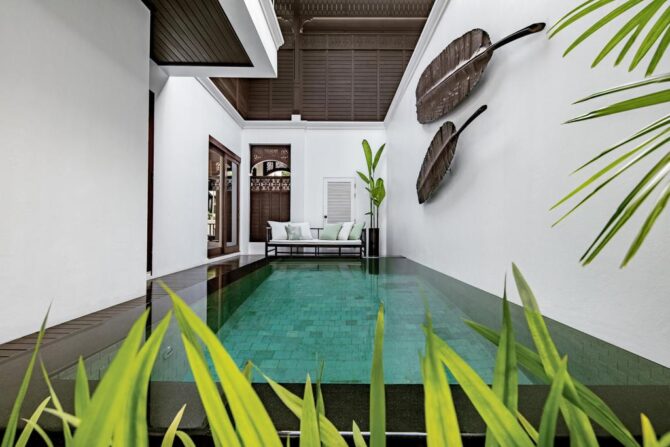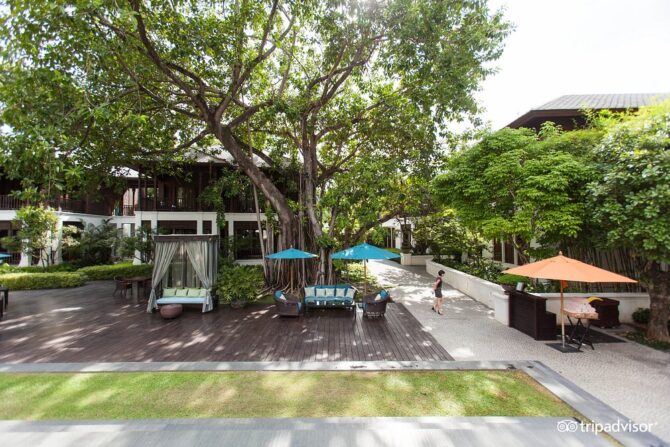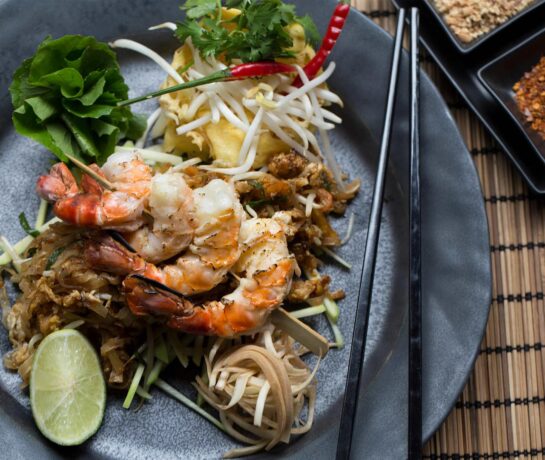Russian tourists consider Thailand a great place for a family holiday – calm, inexpensive, offering entertainment for every taste. But such Thailand, whose economy today directly depends on income in the tourism sector, was not always. Our hero today, the four-star hotel 137 Pillars House in Chiang Mai province on the border with Myanmar, will allow you to look at the pages of dramatic Thai history, and tell about the main city of northern Thailand.
Hotel overview Chiang Mai on map
Location and history
The name of Thailand’s second largest city, Chiang Mai, means “New Fortress”. This name of the city, lying among the mountains in the valley of the fertile Ping River, received in the 13th century, when a wall was built around Chiang Mai to protect against enemy invasions. This wall still exists and marks the boundaries of the Old Town, one of the most popular places among tourists coming to Thailand.
In the Old Town there are dozens of temples and monasteries, the main treasure of which is a piece of the ashes of the Buddha. Until 1775, Chiang Mai was under the rule of Burma. The time from the late 18th to the beginning of the 20th century was for Siam (this name was the state on the territory of modern Thailand until 1939) the most difficult: although the country did not suffer from destructive wars with its northern neighbors, the threat of colonization by Great Britain and France hung over it.
The loss of sovereignty was avoided thanks to the policy of the kings of Siam Rama IV and Rama V, who, by playing a delicate diplomatic game, were able to limit the influence of Great Britain in Siam. Nothing would have been known about the life of these monarchs outside the country if in 1869 in one of the American magazines the memories of a certain Anna Leonuens about life and work at the court of the Siamese monarch did not appear.
Of the five adaptations of these memories, the most famous was the film “Anna and the King” with Jodie Foster in the title role. The court of the Siamese monarchs, indeed, was a harem. King Mongkut had 39 wives and 82 children. As interaction with Britain intensified, and the king was forced to make certain concessions to the world’s most powerful empire, he considered it necessary for the courtiers to speak English, and invited Anna Leonuens, who had experience teaching in Singapore, to teach his family members. On the other hand, the king did not intend to accept the European way of life and abandon traditions, including the harem. Anna’s work at court lasted 6 years and ended simultaneously with the sudden death of the 63-year-old monarch in 1868.
Despite the fact that the Hollywood film adaptation tells about the novel of Anna and the Siamese king, there is no confirmation of this story. Moreover, in Thailand, the book by Anna Leonuens and all its film adaptations, including the animated one, are banned, since the Thais believe that the story told by Anna Leonuens discredits the honor of the king. One of Anne’s pupils was King Rama V Chulalongkorn, who had inherited the throne. He allowed British companies to cut down teak forests in the north of the country. This lucrative business has attracted hundreds of foreigners to Chiang Mai.
The complex of buildings, which now houses the hotel 137 Pillars House,was owned by one of the most famous British companies East Borneo Company, which, by the way, worked the son of Anna Leonouens, Louis. In the 19th century, the north of Thailand was an impenetrable forest. The main labor force, in addition to the locals, were Asian elephants, which were used to carry heavy trees. According to the documents, the East Borneo Company employed nearly 600 elephants. The house on 100 high piles, built in 1889, housed an apartment and an office of the company manager. In 2002, this house had a new owner, who turned it into an elite boutique hotel.
Room stock
The hotel 137 Pillars House has 30 apartments, fully furnished and equipped with everything you need – air conditioning, Wi-Fi Internet access, bars, safes. The apartments of the hotel are distinguished by a large area and the presence of a spacious terrace with furniture for rest and shower. The interiors of the apartments are made in a traditional colonial style – comfortable, practical, with many characteristic bright details and an abundance of sunlight.
Where to eat
The hotel has several bars, a wine cellar, cafes, restaurants of traditional Thai and modern European cuisine, and the chef is ready to surprise guests with culinary delights every day.
Hotel services and tourist potential
There is also a spa, a large swimming pool and a fitness room. Leisure opportunities in the north of Thailand are wide, there are no only famous Thai beaches, since the north of the country is landlocked. First of all, this part of Thailand is famous for hundreds of Buddhist temples, many of which are open to tourists.
In February, April and November, you can get to popular festivals, the rest of the time – to understand the intricacies of Thai cuisine in culinary schools. The main entertainment, of course- elephant riding.
In Thailand, elephants are revered as sacred animals, protected in nature reserves and even celebrated elephant day in March. For thrill-seekers, rafting on bamboo rafts along mountain rivers, hiking deep into the forests, climbing mountains is organized.
































